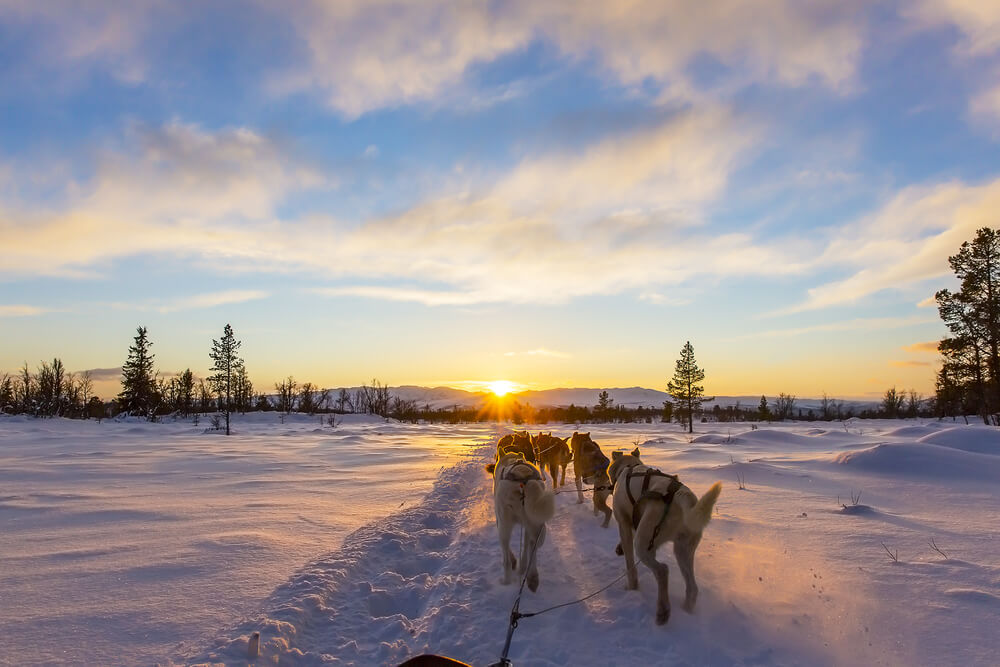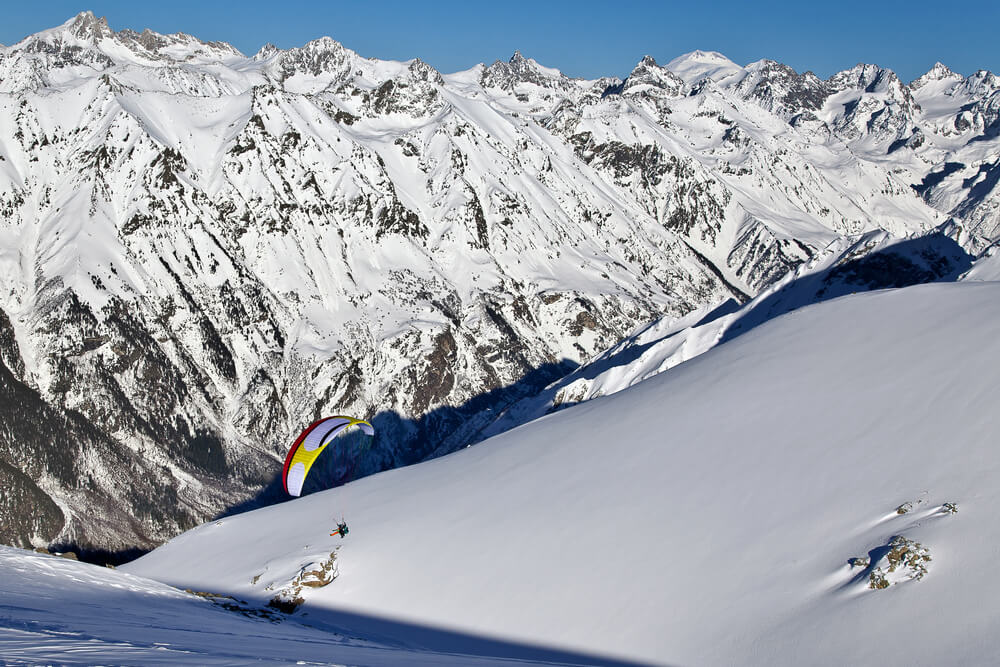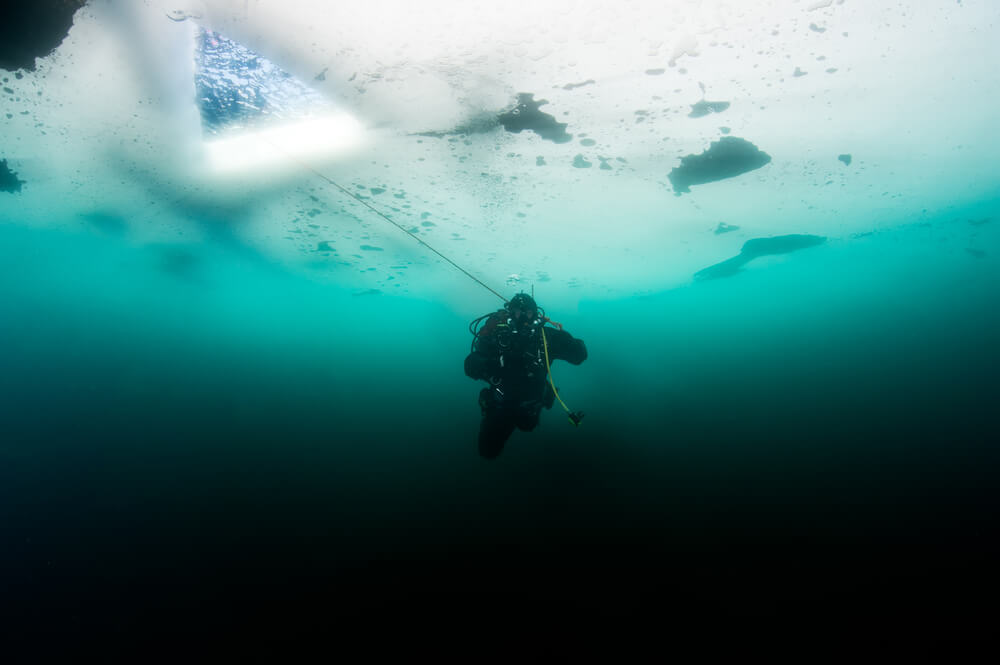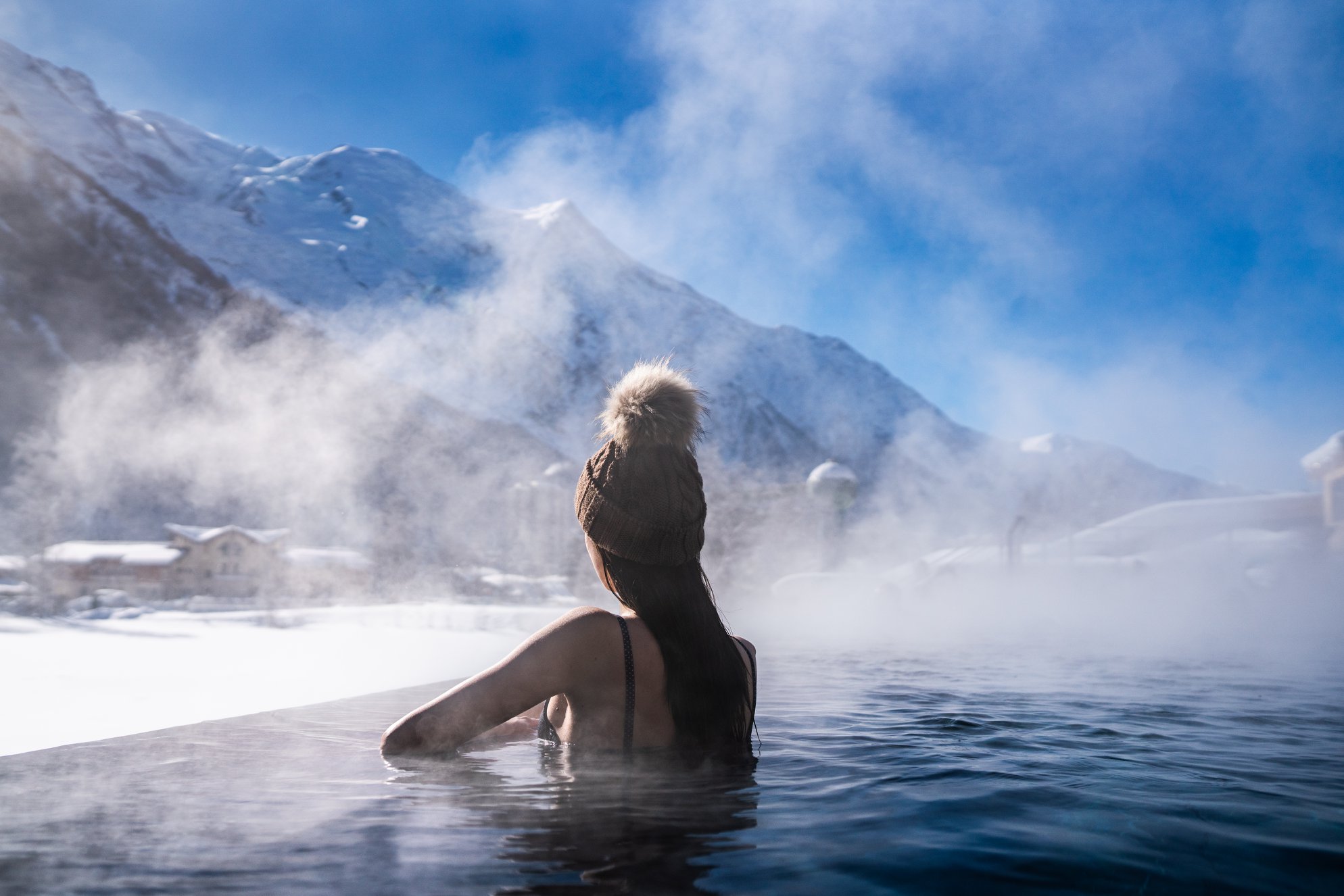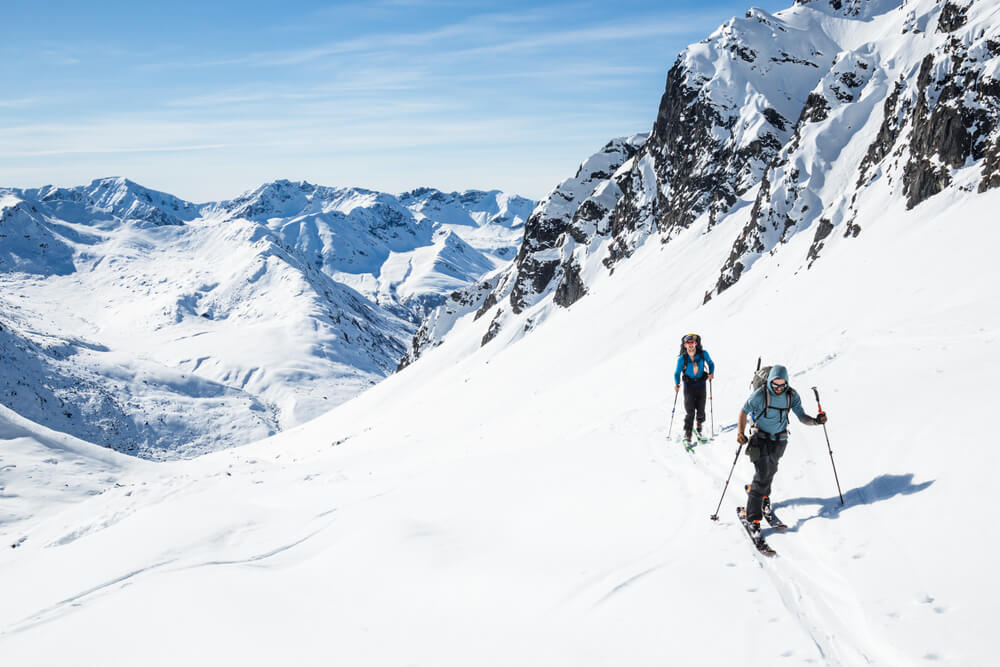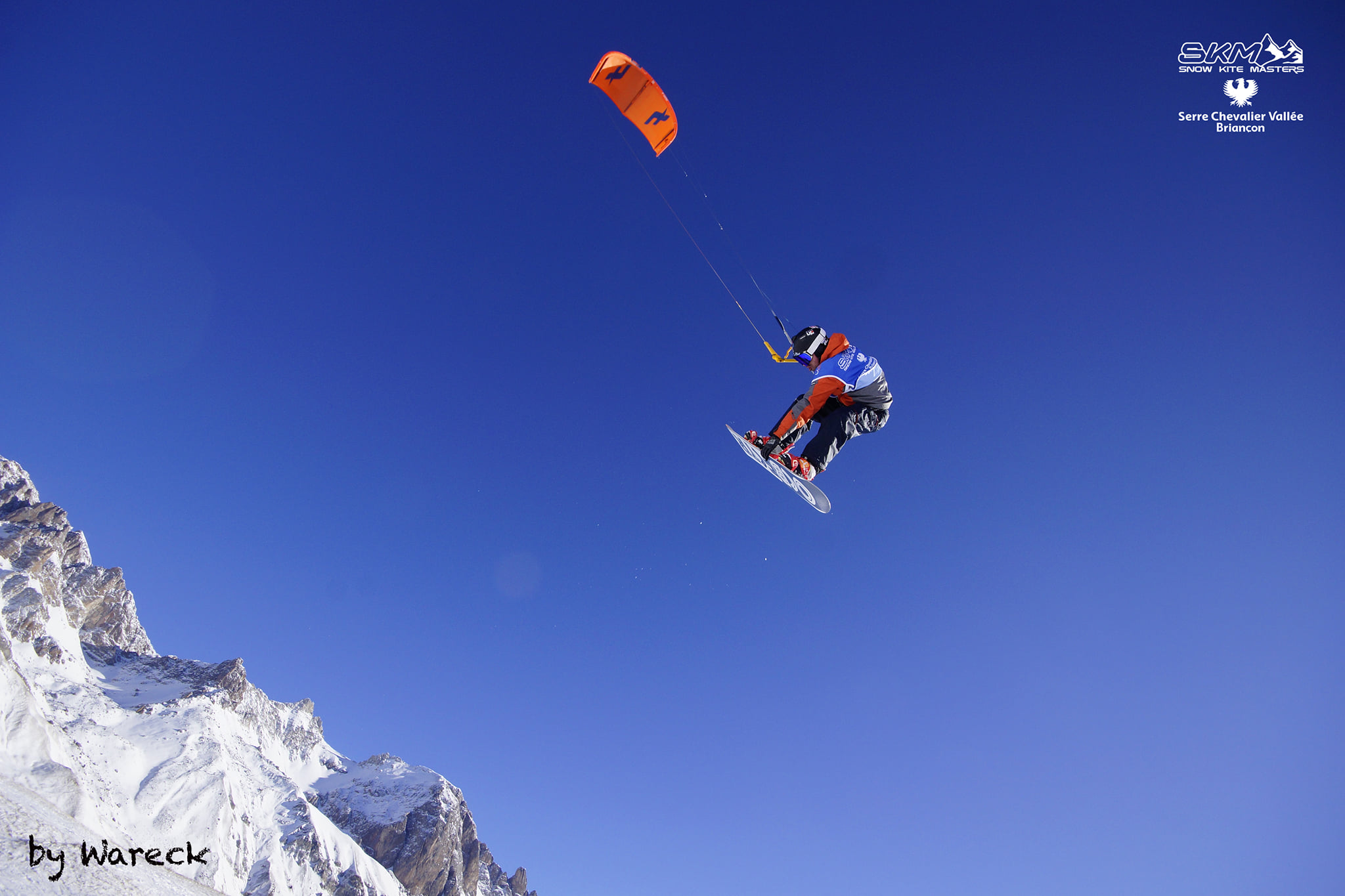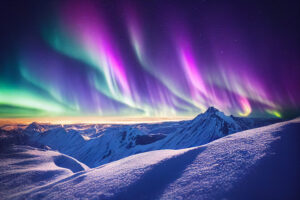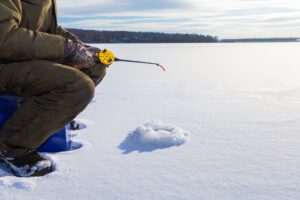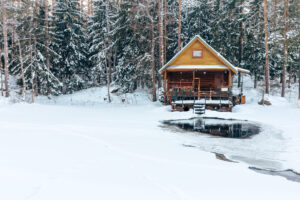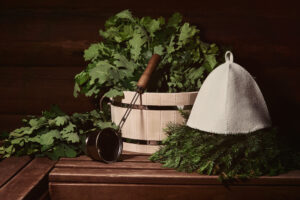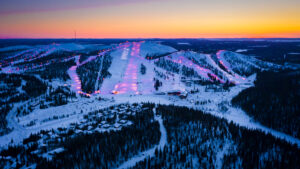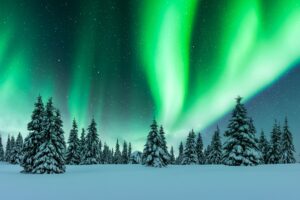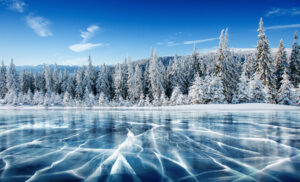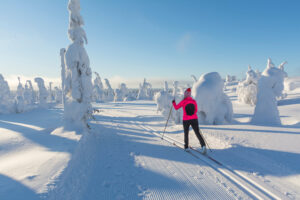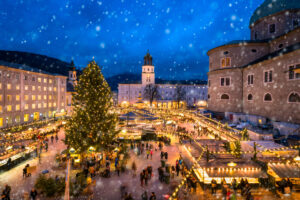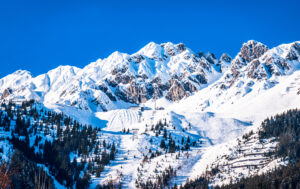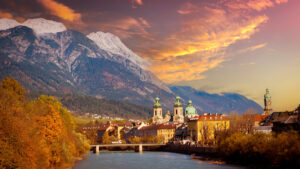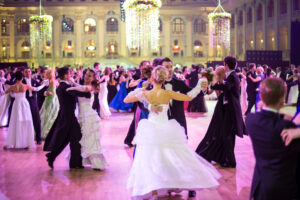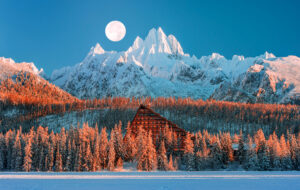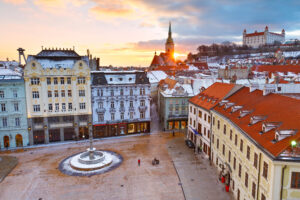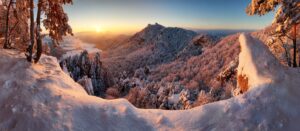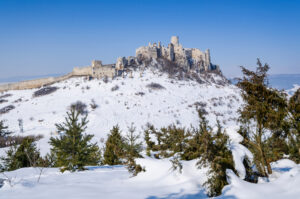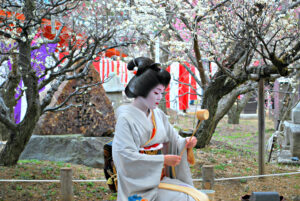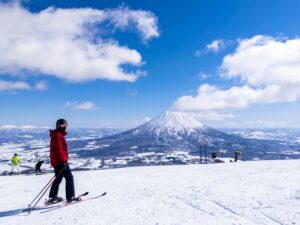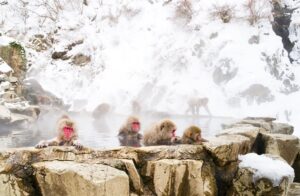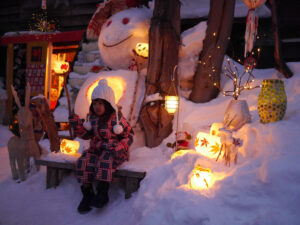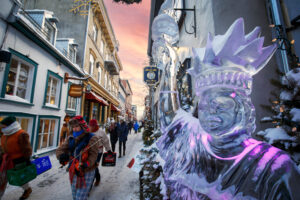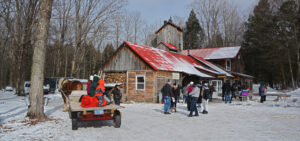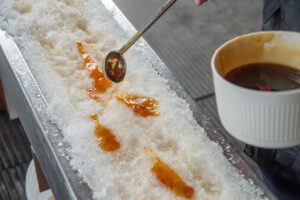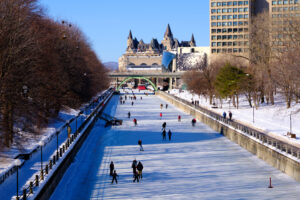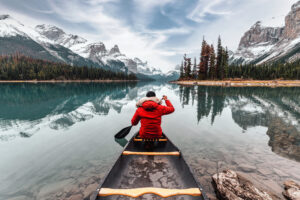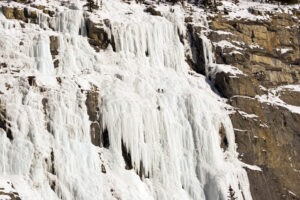The best things to do in winter!
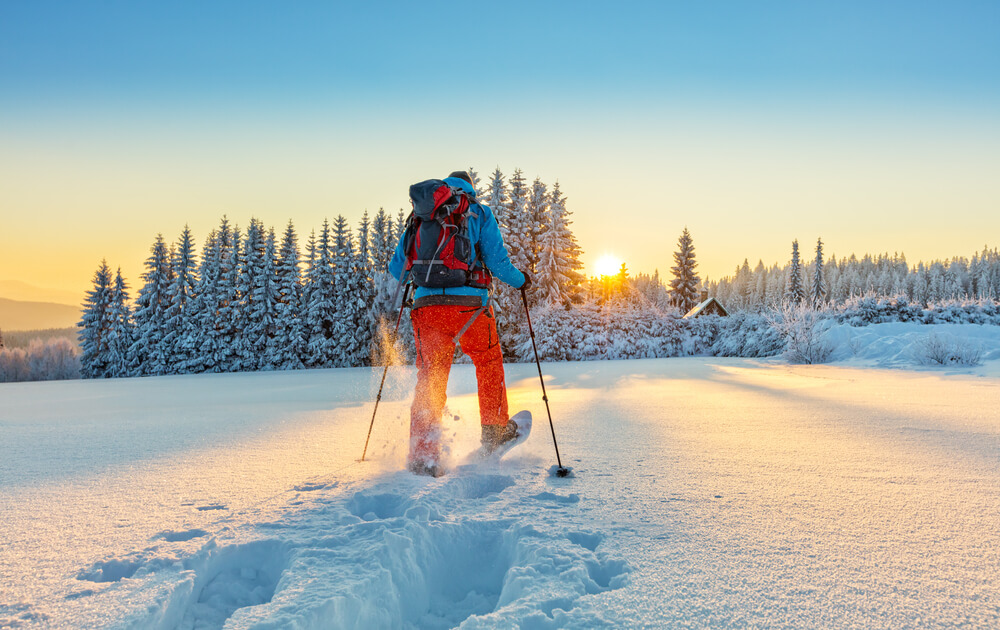
There are those, like me, who love winter! Hats and scarves, fondues and raclettes, hot chocolates with marshmallows and, above all, snow, skiing, snowboarding, snowshoeing and all that goes with it!
So, if you hate winter, and your plan for the next 4 months is to hibernate under your duvet with Netflix as your only ally, this is the list for you!
Put your nose outside, breathe in the slightly prickly fresh air and go in search of fresh snow! The fact is, it’s disappearing fast and becoming harder and harder to find. So let’s make the most of it while there’s still time, take care of our mountains, respect nature and pay homage to her by living our best life, outside face to face with her!
8 ideas for activities to make you love the snow in France!
1. Dog sledding
You don’t have to go to Lapland, Siberia or the farthest reaches of Canada to enjoy the exhilarating experience of travelling for miles through a snow-covered forest, pulled by a team of over-excited dogs!
The feeling of connection with nature is total, the dogs convey an immense joy, and letting yourself be guided by a team of dogs spinning like the wind is an incredible sensation! So this year, why not try your hand at mushing?
The good news is that France is full of wonderful places to go dog sledding! Here are just a few places where you can enjoy this new activity:
The Vercors Natural Park:
Also known as Little Lapland, the Vercors Natural Park is one of the world’s best-known spots for mushing! That’s right, perfectly! Teams of enthusiasts are on hand to help you discover the life of a trapper, whether for a first outing or for several days, on or off piste, in magnificent landscapes straight out of the Great North!
The Jura Massif :
If you’re looking for snow-covered fir trees and a vast, unspoilt natural environment, the Jura immediately springs to mind. Many mushers are based here, offering you unforgettable sleigh rides through the forests of the Jura!
The Pyrenees :
If you’re going on holiday in the Pyrenees, you’ve come to the right place to try your hand at mushing! Many resorts offer the experience, so it’s up to you to choose between a simple ride or driving a carriage! It’s a fun way to discover the beautiful Pyrenean mountains!
https://www.pyrenees-ariegeoises.com/a-voir-a-faire/les-activites-en-hiver-0/chiens-de-traineau-et-compagnie
https://www.tourisme-pyreneesorientales.com/experience/chiens-de-traineaux
https://www.tourisme-hautes-pyrenees.com/offre/recherche/neige/3/~~chiens-de-traineau/(page)/
La Savoie
It goes without saying that Savoie, with its many incredible mountain ranges and large national parks, has a great range of winter activities on offer, and offers you the chance to discover sled dogs. So, for your next ski holiday, don’t hesitate and set off on an adventure with passionate mushers!
https://www.savoienordic.com/avec-chiens-de-traineau.html
Ballon d’Alsace
This is where mushing takes a new turn, and at Lac Blanc in the Vosges, the mushers are also offering sleigh rides pulled by Scandinavian reindeer! Christmas atmosphere guaranteed and a unique opportunity to discover these majestic animals.
https://www.cheminsdunord.com/
Haute-Savoie
The famous resort of Chamonix, overlooked by the majestic summit of Mont Blanc, also offers you the chance to discover the beauty of the region in a dog-drawn carriage. But it’s not the only one! You’ll find plenty of opportunities for dog-sledding in the region!
https://www.savoie-mont-blanc.com/nordique/raquettes-nordique/chiens-de-traineau~pays-du-mont-blanc_terr/
The Hautes-Alpes
For once, let’s save the best for last, with the sublime Hautes-Alpes region!
With an extraordinary panorama, plenty of snow, plenty of winter sunshine and azure blue skies, the Hautes-Alpes ticks all the boxes for an oxygen-packed, successful holiday!
If you’ve always wanted to try your hand at mushing, then you’ve come to the right place, and believe me, you won’t regret it!
https://www.hautes-alpes.net/fr/tourisme/experiences/pleine-nature/activites-nordiques/chiens-de-traineaux.html
2. Snowshoes

The best things are often the simplest.
Armed with a pair of snowshoes, après-ski boots and your poles, you’re off into the heady silence of the mountains cloaked in their beautiful white coat.
The calm, the glistening snow, the trees, the animal tracks in the immaculate powder. It’s all there to give you that immense feeling of fulfilment.
And best of all, it’s good for your health too! This endurance activity strengthens your heart and aerates your lungs! An hour’s walk on snowshoes in powder snow with a change in altitude will burn between 500 and 800 calories! Just like Aquabiking! The shape of snowshoes means they don’t sink into the powder, leaving your heel free for normal walking. Modern snowshoe models now feature a system that locks the plate that holds the shoe to the snowshoe.
This can be very useful when there’s a lot of slope and you’re not walking straight, or when you’re doing a long descent in powder snow. You’ll be more precise and be able to move faster and more freely.
The rest of the time, keep your heel unhooked for a natural walk.
Available wherever you find snow, here are 3 ways to experience snowshoeing.
Accompanied by a guide
If you’re not comfortable in the mountains and don’t know where to start, you can take part in a guided snowshoe walk. Alone or in a group, you can contact a guide or join an organised excursion.
There’s so much on offer, you’re bound to find something to suit you!
Don’t panic, you don’t need to have done it before, or know how to ski, or be a great sportsman! You’ll soon get the hang of it, one foot in front of the other and at your own pace!
Snowshoeing by night
There’s nothing like a walk in the snow under the stars to make the most of the snowshoeing experience.
Armed with your headlamp and enjoying the absolute peace and quiet of the mountains at night, you’ll love strolling through the forest, listening out for the sounds of nocturnal animals. The glow of the snow means you won’t be in total darkness, and if you stick to marked paths, you’ll be just fine.
When you arrive at the refuge, you can enjoy a raclette or other comforting dish involving melted cheese, before deciding to head back down into the valley, or to stay overnight, depending on the options offered by the refuge.
On your own
If you need to clear your head and take a deep breath, then walking alone on snowshoes will do you a world of good. Walking is essential for good health. I’m not telling you anything new when I say that it tones the body, burns fat, stimulates the bones, lowers blood pressure, improves breathing and purifies the body as a whole.
But on top of all that, walking in the great outdoors is good for fighting depression. You release endorphins that calm your nerves, disconnect from screens and their flood of information, reduce stress and improve concentration.
All to the good. But on top of all that, which is true everywhere, add the snow, the sun and the altitude! The mountains are an exceptional natural setting that gives you a natural boost. The altitude forces your body to produce more red blood cells, the sun gives you your dose of vitamin D, and the pollen- and pollution-free mountain air helps you learn to breathe again.
Taking advantage of this moment to yourself is a real treat. Even if your thoughts seem to be racing at first, they’ll eventually calm down and you’ll be able to refocus. A true meditative walk. Before Ben Mazue, Jean-Jacques Rousseau also extolled the benefits of walking:
“Never have I thought so much, existed so much, lived so much, been so much myself, if I dare say so, as in my journeys on foot”.
3. Paragliding
If you’ve always dreamed of flying in a paraglider and seeing the valley from the sky, then treat yourself to a first paragliding experience on skis! It’s an unforgettable way to discover the snow-covered peaks!
Accompanied by a professional pilot, you’ll glide down the runway on skis before taking off gently and flying through the mountains!
You don’t need to be an experienced skier, you just need to be able to ski down a blue runway.
Thrills guaranteed, and you’ll definitely want to come back for more!
Where can you try paragliding on skis?
- La Clusaz (74)
- Chamonix (74)
- Méribel (73)
- Courchevel (73)
- Val d’Isère (73)
- Alpe d’Huez (38)
- Les Orres (05)
- Vars (05)
- Pra-Loup (04)
- Tourmalet (65)
- Barège la Mongie (65)
4. Diving under the ice
If you’re not claustrophobic (or too cold) and you want to try something really different, take the plunge and try ice diving!
A number of mountain lakes are covered in a thick coat of ice in winter, promising you an immersion in an underwater world where the play of light and shadow seems unreal. A bewitching and disconcerting experience!
Don’t panic, you can’t get lost (you’re attached to Ariadne’s thread) or freeze! Diving centres will provide you with the necessary equipment to keep you dry underwater. If you want even more thrills, you can dive at night!
Tignes
If you were fascinated by Luc Besson’s film “Le Grand Bleu”, you’ll be delighted to know that the Peruvian diving scene was filmed under the ice of Lake Tignes. From the Andes to the Alps!
Now it’s your turn to explore the depths of this mysterious reservoir with the Tignes ice diving school.
Tel: +33 (0)4 80 98 50 01
Web: https://www.tignes-plongee.com/
Chamrousse
Chamrousse’s 3 Robert lakes, covered in a thick layer of ice, are ideal for ice diving at an altitude of over 2,000 metres! Find out more from the Dive Extrême ice diving school!
Tel: +33 (0)6 16 96 71 73
Web: http://www.divextreme.fr/
Val Cenis
With Sensation Vanoise, the Val Cenis aquatic centre invites you to discover ice diving at Lac de Sollières, at an altitude of 1,400 metres. Special mention should be made of the night dive followed by a delicious fondue! Just the thing to warm your heart and body!
Tel: +33 (0)6 60 08 47 80
Web: https://www.sensationsvanoise.com/plongee-sous-glace/
Morzine Avoriaz
Lake Montriond, nestling in the heart of the Aulps valley, is the third largest lake in Haute-Savoie, behind Lake Geneva and Lake Annecy. You can dive up to 10 metres under the ice thanks to the Aquaventure Léman diving centre!
Tel: +33 (0)6 07 14 95 39
Web: https://plongeesousglace.com/
Oyonnax
The Oyonnax subaquatic club also offers you the chance to discover this unusual activity at dedicated weekends at Lac Genin. Imagine a small mountain lake, surrounded by an immense pine forest… If you feel like you’ve landed in Quebec, you should know that Lac Genin is rightly nicknamed “Le Petit Canada du haut Bugey”.
Tel: +33 (0)6 18 84 34 94
Web: https://clubsubaquatiquedoyonnax.vpdive.com/w/accueil-2
Val Thorens
Europe’s highest resort obviously has a little frozen lake up its sleeve to give you some chilly thrills! The company Évolution2 is the place to go if you want to try your hand at ice diving on the Lac du Lou site, perched at an altitude of over 2,000 metres. If you’d also like to try freediving under ice, you can do so with their partner “Fifty Shades of Blue” (yes, you’ve got to admit, it’s a great name!).
Tel: +33(0)6 13 76 78 74
Web: valthorens.evolution2.com/activities/adventures/ice-diving
Les Angles
In the Eastern Pyrenees, you can experience this icy adventure at the Cap Cerbère diving centre in the resort village of Les Angles.
You’ll discover the secret world of Lake Balcère, from mid-January to early March (yes, it’s not as cold in the Pyrenees as it is in the Alps to preserve ice).
Tel: +33 (0)4 68 88 41 00
Web: https://www.plongee-cap-cerbere.com/
5. Open-air hot springs
Photo Page Facebook QC Thermes Chamonix
If you’ve been cold just reading about the idea of going under the ice and thinking “I wouldn’t dream of it”, perhaps the hot springs will be more to your liking.
Close your eyes and imagine yourself comfortably seated in an outdoor hot tub, surrounded by snow and facing an exceptional view, day and night.
Whether you prefer top-of-the-range mountain spas or natural hot springs in the heart of nature, France has plenty of establishments where you can indulge yourself! Here are a few to inspire you…
The QC thermal baths in Chamonix
The famous Italian spa house QC has landed on the other side of Mont Blanc, offering us their class and expertise at the QC thermes in Chamonix. 32 wellness areas, nothing less, in a sublime setting, inside and out!
Web: https://www.qcterme.com/fr/chamonix-mont-blanc/qc-terme-chamonix
Durancia in Montgenèvre
Inaugurated at the end of 2014, the Durancia balneotherapy and wellness area in Montgenèvre in the Hautes Alpes region, lets you enjoy all the benefits of water in a breathtaking setting. You’ll also find a Nuxe spa and a fitness room.
A haven of peace at an altitude of 1,860 metres.
Web: https://www.durancia.com/
Les Grands Bains Monêtier
The first spa and leisure centre in the Alps, built in 1999! Taking advantage of the thermal waters of Monêtier, which the Romans already used for their beneficial effects, the Grands Bains du Monêtier is a veritable institution in Serre Chevalier! Don’t delay!
Web: https://lesgrandsbainsdumonetier.fr/
Courchevel Aquamotion
When it opened in 2015, Courchevel’s Aquamotion was the largest aqualudic space in the Alps, with over 10,000 m² entirely dedicated to water and its benefits. But that’s not all! Here, it’s more like a water park, with slides for the kids, an artificial wave to learn how to surf, and a climbing wall!
There are also a number of wellness areas, in a stunning architectural setting. Just like Courchevel!
If you’re already a winter sports fan and want to take your discovery a step further, here are a few activities to try out!
6. Ski touring
For the more sporty among you, ski touring is THE sport to do this winter.
As well as allowing you to enjoy wonderful ski descents alone in the world, without having to pay the increasingly high prices of ski passes, ski touring opens up a huge door to freedom.
First of all, what is ski touring?
Description
Ski touring, unlike downhill skiing, is practised in the wild (even if you can find secure tracks close to the slopes). Your skis are fitted with sealskins (in a manner of speaking, no seals have been mistreated for the pleasure of skiers! Well, in real life, they used to be, but not any more!) So you have a synthetic material that you stick under your skis and that allows you to go up the slope without slipping. The skin glides up the slope, but blocks and slows the glide backwards.
This support allows you to move forward on the snow and get to the top of the mountain without the help of the ski lifts! Once you’re up there, of course, the skins come off and you can finally enjoy that well-deserved descent!
There are no gondolas on the horizon or ski schools snaking their way down the slope, the mountain is yours and the connection with the surrounding nature is total.
How to get started
First and foremost, you need to know how to ski on the slopes. Ski well, in fact, and you should already be somewhat at ease on ungroomed runs. You also need to be in good physical condition, because the slopes can be quite steep!
If these conditions are met, surround yourself with qualified people. If you have friends who know what they’re doing, great. Otherwise, the best solution is to go with a guide or a certified organisation such as your local ski club.
Don’t buy straight away, wait and see if you like it, because it’s quite an investment! If you don’t want to break the bank, rent in town or at the bottom of the valley, and don’t hesitate to ask for advice from the hirers and sellers, who are generally enthusiasts and will be able to guide you. The same applies to clothing. You don’t dress like you would on the slopes, and don’t forget that you’re going to be sweating uphill! And of course, don’t forget your avalanche safety equipment, with the shovel-sonde-Arva combo, or the airbag rucksack.
A word of warning
We can’t stress this enough: if you’re a beginner, don’t go off on your own anywhere in the mountains just to try it out. It’s a wild and dangerous terrain that will make mincemeat of the little human you are. You need to know the mountain, know how to handle it and know how to read its codes and warnings.
Even with several people, if you’re not an expert on the terrain, don’t set off without a professional.
If you really want to attack without a guide, head for a resort that offers safe ski touring routes.
Whatever the case, even with the best mountain guide in the world, there is no such thing as zero risk.
7. Snow kiting
Photo Facebook Page SnowKite Master
If you love intense sensations, why not try your hand at snow kiting!
This sport is similar to kite surfing in that you’re pulled along by a kite, but you’re on a snowboard.
You ride down the slopes, playing with the terrain and letting the wind carry you. You really need to know how to handle the kite and understand the wind before putting on your board. You can also try it on skis, but it’s rarer and less obvious.
Don’t be fooled by the fact that you can’t snow kite everywhere (and let’s face it, it’s not cheap), especially not on the slopes! Here are a few popular places to try snow kiting in France.
The Col du Lautaret
This magnificent peak in the Hautes-Alpes is world-famous for snow kiting. The wind blows here almost constantly and the terrain is perfect for learning this new discipline! Not to mention the breathtaking views over the surrounding countryside!
It’s not for nothing that the Col du Lautaret hosts the Snowkite Masters, the equivalent of the World Cup for this discipline!
The Col du Petit Saint Bernard
On the border between France and Italy, the Col du Petit Saint-Bernard is another great spot for snow kiting. The conditions are excellent, the snow ideal and the environment magnificent!
You’ll find plenty of snow kiting schools to get you started and discover your new favourite sport!
The Vercors
The villages of Autrans and Lans-en-Vercors are located in the Vercors Regional Park, near Grenoble. The plateau is wide and well exposed, so you can learn to snow kite in complete safety!
The Pyrenees
If you’re more into the Pyrenees, then the Col du Puymorens is the place to go. It’s one of the oldest snow kiting spots in France!
The conditions are excellent, of course, and the Col du Puymorens is well known in the industry.
The resort of Les Angles is also perfect for trying your hand at this discipline, whether you’re a beginner or an expert, with easy or technical zones.
The Jura
As we’ve seen, the Jura has the distinction of offering cold, dry winters with good snow conditions. With its less rugged terrain than the Alps, it’s an excellent spot for snow kiting, with the resort of Les Rousses in particular offering schools and beginners’ courses.
Les Rousses is also the venue for the Jurakite, a snow kiting competition bringing together the best riders in France (and Switzerland, after all, this is the Jura, the land of border crossers!)
8. Ice climbing
If you’re a keen climber with an interest in mountaineering, ice climbing is for you!
Often considered a difficult and inaccessible sport, ice climbing is actually relatively affordable.
A number of sites offer the experience, giving you the chance to discover the mountains in a different way, in the shoes of a mountaineer!
Where can you try it?
- Val Thorens
- Chamonix
- Lans en Vercors
- La Grave
- Les Deux-Alpes
- L’Alpe d’Huez
- Ceillac
- Champany en Vanoise
- Pic du Midi
The best countries for the ultimate winter experience!
You’re in luck: France, with its many mountain ranges, is a country that lends itself perfectly to discovering snow and winter activities.
But if you’ve got a hankering for something different and want to combine travel, winter and foreign culture, here are a few ideas to inspire you!
Finland
When you think of Finland, you immediately imagine magical landscapes, with snow-laden fir trees, frozen lakes and psychedelic skies playing at creating the most beautiful aurora borealis. Children dream of Santa’s village, nature lovers of being in the middle of the forest, and the hyperactive of being able to try out all the country’s incredible activities, while cocooning pros are waiting for just one thing: the famous Scandinavian wellbeing, made up of hot chocolate, thick socks and books to devour by the fireside. Maybe you’ll even tick all the boxes!
Whatever your expectations, Finland in winter promises an extraordinary journey that you won’t soon forget!
Here’s a small selection of the must-see things to do in Finland:
Ice fishing
As any Finn will tell you, everyone has gone ice fishing at one time or another. Also known as ice fishing or hole fishing, this typical, almost meditative activity offers you the spectacle of the immensity of white while teaching you patience. And if you’re good at it, you’ll have the added bonus of dining on some decidedly fresh fish!
You’ll need small fishing rods and a hand drill to drill your hole and reach the depths of the lake (there can be 1 metre of ice!) If you’re not much of a fisherman and don’t feel like knocking out your catch, then scaling and preparing it, feel free to release it. Just for the pleasure of having discovered this Finnish practice.
Practical info:
Good news: you don’t need a licence for this type of fishing! But be sure to ask if you’re in a protected area, such as a national park or nature reserve, which may have special restrictions.
Where to go fishing?
Anywhere! Remember that Finland is nicknamed “The Land of 1000 Lakes”! Officially, there are many more! There are 187,888 lakes with a surface area of over 500 m². This makes Finland one of the countries with the highest density of lakes in the world. So you’ll be spoilt for choice when it comes to fishing!
That said, here are a few well-known spots for hole fishing:
- Lake Inari, in Lapland: one of Finland’s largest lakes, perfect for a fishing experience in an Arctic setting. It is home to trout, whitefish and perch.
- Lake Saimaa, in the Thousand Lakes region: Finland’s largest lake. Here you can catch pike and perch under the ice.
- Lake Päijänne: the deepest lake in the country, it supplies water to the capital region. It’s a popular spot for local fishermen, and there are plenty of guided excursions available.
- Lake Kitka and its crystal-clear waters make for great winter fishing.
- If you’re only going to Helsinki, you can get closer to Lake Tuusula, less than an hour from the capital, which offers a convenient option for discovering ice fishing without going too far.
Safety and equipment
Even if the ice seems thick and solid, always ask the locals if certain areas are inadvisable. There should be at least 10cm of ice for an adult on foot, 15cm for a bicycle and 30cm for a car (40cm for a pickup or van).
Use appropriate clothing, using the three-layer system, with breathable thermal clothing that stays dry, a fleece or other insulating material and a waterproof windproof jacket.
For fishing equipment, especially the hand drill, be careful and don’t hit the ice, as the blade is very fragile (and it will cost you if you have to replace it!).
The traditional sauna
One of Finland’s most deeply rooted traditions is that of the sauna. You’ve probably already had the experience, but it’s something else that awaits you in Finland: a moment of ancient relaxation to cleanse the body and mind. Saunas in Finland have been around for over 2,000 years! It used to be the cleanest place in the house, and was even used as a delivery room!
With around 3 million saunas for a population of 5.4 million, you can see just how important this tradition is. Whether public or private, they are always very popular and a must-do during your stay. We even tend to say that it’s in the saunas (more than in meetings) that the big decisions are taken!
Where to go?
The private electric sauna in your accommodation
There’s a good chance you’ll have a sauna if you rent a house or flat in Finland. Accommodation is generally equipped with electric saunas. All you need to do is press a button to enjoy the experience. It’s a good way to get into the swing of things.
Traditional public saunas
If you want to mingle with the crowds and meet the Finns, opt for a public sauna instead. There are all kinds. In Helsinki, for example, you can go to the beautiful Löyly sauna, magnificent with its seaside design, or the more traditional Kotiharjun Sauna, heated with wood, for total immersion in the authenticity of the local culture.
Nature saunas
What better way to enjoy this almost spiritual experience than in communion with deep nature! Rent a chalet with a private sauna and plunge straight into an icy lake after your session. With so many forests and lakes in Finland, you’ll have no trouble finding what you’re looking for!
Unusual saunas
If you’re looking for an even more unique experience, why not visit a floating sauna, or an ice sauna where you can jump into a hole dug in the ice after breaking a sweat! It may be scary, but it’s as invigorating as it is authentic!
Good to know
- The different types of sauna: There are several ways to heat a sauna. Electric saunas, infrared saunas, gas saunas or wood-fired saunas, which offer a more authentic feel, and the famous smoke sauna. The latter takes longer to heat up, and all the smoke has to be evacuated before you can enter.
- Etiquette: Be careful if you’re prudish, the sauna is practised in the simplest of clothes. Men and women are generally separated, but it is common for families to go all together. If you’re in a mixed group, it’s perfectly normal to discuss who will go with whom, and if you’re not comfortable with the idea of being completely naked, the Finns won’t hold it against you, so don’t panic.
- Typical ritual : To get the most out of the experience, it’s advisable to go to the sauna according to the rules. You need to follow a traditional cycle: sauna, cold shower (or plunge into a lake), and rest. You can then repeat this process several times.
- Löyly: Whichever style of sauna you choose, you’ll find hot stones on which you pour ladles of water, releasing steam (löyly) and bringing new waves of heat. If there are several of you in the sauna, make sure everyone agrees before pouring any water.
- Accessories: You’ll also find braided birch branches, which are used to ‘flagellate’ the body to get the blood flowing. They are called ‘vasta’ or ‘vihta’ (depending on the region). Don’t worry, it won’t hurt, and your skin will be soft!
- Post-sauna: It’s common to extend the experience by staying in the “tupa”, an adjoining room where you can have a drink or a snack after the session to make the pleasure last. Finns generally drink blueberry juice, beer or cider, and eat sausages grilled (makkara) over an open fire.
Night skiing
So yes, you may be saying to yourself, “that’s all very well, but going on holiday in winter in a country where it’s dark at 22:00 or 24:00 is no way to go!
But the polar night (kaamos) is a mysterious phenomenon that allows you to enjoy new and completely unique experiences, like skiing at night! Imagine hurtling down the snowy slopes under a sky sparkling with the light of the moon, multiplied by its reflections on the snow.
What’s more, as the resorts are much smaller than in France, the price is much lower than you might have thought! Expect to pay between €30 and €50 for an adult day pass.
Where can you ski at night in Finland?
- Levi: skiing in Lapland! It’s not something that happens every day! Levi is undoubtedly the most famous resort for night skiing, with its slopes lit up until late at night. Levi is also renowned for its enchanting scenery and après-ski activities, such as snowmobile and dog-sled safaris.
- Ruka: close to the Arctic Circle, Ruka offers a unique atmosphere for night skiing. The resort has a large number of floodlit pistes for all levels of skier around Mount Rukatunturi (the highest peak in the region – 492m ^^), close to the Arctic Circle. Skiing under the Northern Lights takes on a whole new dimension, when the light of man meets the light of the gods.
- Ylläs: welcome to the Pallas-Yllästunturi national park, renowned for offering the purest air in the world! With over 60 runs, Ylläs is one of Finland’s largest ski resorts. Part of the ski area is lit up at night for night skiers. You can also explore the trails on cross-country skis or snowshoes in the evening, for an equally magical experience!
- Pyhä: ideal if you don’t like crowds! Pyhä is a tiny resort with 9 lifts, floodlit pistes in the evening and a calm atmosphere, ideal for a small group or family outing away from the hustle and bustle of the mega-resorts.
- Saariselkä: if you’re looking for nature-based activities, you may have come across the name Saariselkä. As well as the traditional sleigh rides and igloo nights, this small resort in Finland’s far north also offers the chance to ski under artificial lights and the stars.
Northern Lights Watching
But if you’ve decided to brave the cold and the polar night, it’s above all for the promise of an unforgettable spectacle: the famous Northern Lights. This dazzling phenomenon regularly tops the list of experiences you should have at least once in your life!
What is an aurora borealis?
You may be wondering how it’s possible for so many colours to appear and twirl in the starry sky! This phenomenon is explained by the presence of charged particles in the solar wind, colliding with the gases in the Earth’s atmosphere, in particular oxygen, which gives off the colours green and red, and nitrogen, which emits blue, red and violet.
Where can you go to see the Northern Lights in Finland?
To see the sky dancing, decked out in its most beautiful colours, you need a bit of organisation and luck. Above all, you need a combination of clear skies, cold, dry temperatures and a solar storm. But don’t panic, there are some very useful applications and websites to guide you, such as Aurora Forecast or Aurora Maniac, which use satellite data to predict the probability of sightings in your region.
The ideal region is Finnish Lapland, where almost 200 nights of auroras are recorded every year (compared with 10 to 20 in the south of the country)! For the best experience, stay away from light sources and closer to the lakes, where they are at their most beautiful.
Here are a few well-known places to see the Northern Lights:
- Rovaniemi: The capital of Lapland, very popular for family holidays with its famous Father Christmas village and all the winter activities on offer. But you need to get away from the city centre for the best experience. You could, for example, choose accommodation close toOunasvaara Hill, on the outskirts of the town.
- Luosto: just 1h30 from Rovaniemi is Luosto, famous for its Pyhä-Luosto park. The Santa Aurora hotel is a must-see in the region, famous for its heated glass igloos equipped withAurora Alert, which wakes you up so you don’t miss a thing!
- Urho Kekkonen National Park: This very isolated region, lost in the north of the country, is perfect for snowshoe hikes away from the light pollution. You can go to Saariselkä, Ivalo or Inari.
- Pallas-Yllästunturi National Park: in the west of Lapland, this park is recognised as a Dark Sky Reserve and has a number of ski resorts that can be used as a base for your aurora hunt! We’ve already mentioned Levi and Ylläs in particular.
- Kilpisjärvi: And if you’re not afraid of getting a little further away from the Lapland capital, then head north to one of the most northerly places in Finland! Close to the triple border between Norway, Finland and Sweden, Kilpisjärvi is a place of bewitching wild beauty, with a high probability of seeing auroras thanks to its clear skies and very low temperatures.
What’s the best time to be sure of spotting one?
Weather is not an exact science, but you’re most likely to see the Northern Lights in Finland between November and February. In Lapland, the season is longer, running from September to April! Although we tend to associate them with winter, it is in fact in autumn and spring that solar flares are most likely to interact with our planet’s magnetic field. What’s more, you’ll avoid the Father Christmas season and all that it entails (high prices, more people, fully booked hotels, etc.).
Ice skating
A bit of history
The immensity of the frozen lakes is not just great for ice fishing! It’s also the ideal place to go ice skating in the great outdoors! And you’ll be surprised to learn that this activity is not new! Archaeological digs have revealed the use of primitive skates, made from animal bones, dating back some 4,000 years! They didn’t slide, but they made it easier to walk on the ice. In the Middle Ages, the bones were replaced by iron, which enabled metal blades to be fashioned to glide and move faster. It wasn’t until the 19th century that skating began to take on a sporting and recreational dimension. From the beginning of the 20th century, speed skating and ice walking competitions began to appear, and today ice skating is a must-do activity in Finland.
Where and how can you enjoy it?
On frozen lakes all over Finland, and even sometimes (conditions permitting) on the frozen Baltic Sea. Well-cleared tracks are generally laid out to guarantee safe conditions. Towns also often have outdoor or indoor skating rinks , where you can hire your skates. And if you fancy going further afield, then be sure to take part in a guided long-distance skating excursion! These excursions into the heart of nature allow you to explore vast expanses in complete safety!
What equipment should I use?
There are two styles of skate: long-bladed skates for long distances (better stability and smoother glide), or classic skates, used in ice rinks and for fun.
If you’re going on your own, it’s also a good idea to bring ice picks (emergency picks to get out of the water if the ice breaks) and a waterproof bag with a change of clothes.
Cross-country skiing
But the real star of the country is cross-country skiing! Used for thousands of years by local people to get around, it’s now a veritable institution and the national sport!
Breathtaking landscapes
Cross-country skiing takes you through a variety of landscapes, including the valleys of Lapland, snow-covered forests and frozen lakes. The various national parks offer exceptional panoramic views of the surrounding area!
An exceptional network of runs
With all this in mind, you won’t be surprised to learn that Finland has the best cross-country skiing network in the world, with an impressive mileage! Some resorts, such as Levi and Ruka, offer hundreds of kilometres of marked trails. You’ll find two kinds: for classic style (not alternating) and for skating style (not skating). They are also often floodlit, so you can ski in the evening.
A sport for all abilities
If you’ve never done cross-country skiing before, don’t panic – you can take lessons, or just hire equipment and get started! But if you’re an expert at cross-country skiing, why not try your hand at a marathon, like the very popular Finlandia Hiihto!
Meet Father Christmas
For families (and all those who still have a childlike spirit), a visit to Santa’s village in Rovaniemi is a must on any trip to Finland!
The capital of Lapland is Santa Claus’ official address, and you’ll be able to drop in and say hello to him, and meet his reindeer, elves and goblins in the most magical of surroundings! As the village is located on the Arctic Circle, you’ll also get a certificate proving that you’ve crossed it!
Austria
A champion of arpees-skiing, convivial evenings and heart-warming cuisine, Austria is a destination of choice for snow holidays! Austrian villages, with their wooden chalets and Baroque churches, are a magical place to be when winter arrives. The Christmas markets are renowned and the resorts are modern and well-maintained, at a slightly lower price than in France. All in a breathtaking Alpine setting!
The Salzburg Christmas market
Visiting Salzburg during the festive season means taking part in one of the most beautiful and oldest Christmas markets in the world! The market on Cathedral Square dates back to the end of the 15th century. Then, in the 17th century, it was dedicated to Saint Nicholas and the sale of toys and sweets for children began around 6 December, his feast day. Today, the market boasts around a hundred magnificent stalls, as well as a daily cultural programme featuring children’s fairy tales, parades of Krampus (a kind of bogeyman), choirs and more.
Open: late November to early January
For more information, visit Salzburg Christmas Market
Skiing (and more) in Innsbruck
The capital of the Tyrol is definitely the perfect city for a snow holiday! If you’re travelling with a group of friends or family and everyone likes different things, you’ll all find something to suit you! The city, which has twice hosted the Winter Olympics, offers a perfect balance of sports, culture, traditions, heritage and nightlife. What’s more, finding accommodation is much easier and cheaper in the city than in the resort.
1/ A paradise for winter sports fans:
Skiers can choose from a number of high-quality resorts, easily accessible by free shuttle bus (20-60min depending on the resort chosen), so they can vary their enjoyment by discovering different ski areas.
The main ski areas around Innsbruck
- Nordkette: The easiest to get to, accessible directly from the city centre by funicular and cable car! Renowned for freeride and popular with good skiers, this area also offers spectacular views of the city.
- Axamer Lizum : Around 20 minutes from the city, you can take to the slopes that hosted the 1964 and 1976 Olympic Games. The slopes here are varied and suitable for all levels. Great for freeride and freestyle.
- Stubai Glacier: Around 45 minutes away, this is Austria’s largest skiable glacier. Guaranteed snow! Its wide slopes are particularly popular with families.
- Patscherkofel: Innsbruck’s landmark mountain, with its rounded summit and radio antenna, has runs suitable for beginners and intermediate skiers, and a friendly atmosphere.
- Schlick 2000: Located in the Stubai valley, this is the resort to go to for panoramic slopes and fun in the snowpark.
The Ski + City Pass
The city of Innsbruck has put together a unique combined pass, including access to the 12 ski areas around the city, as well as several of the city’s top cultural attractions. An ideal way to save money and combine sport and culture!
2/ A city full of heritage
Those who don’t like winter sports can enjoy Innsbruck’s beautiful historic centre! It’s the ideal place for a group holiday mixing skiers and non-skiers.
Here are a few sites not to be missed!
- The Golden Roof (Goldenes Dachl): This is the ultimate symbol of Innsbruck! A magnificent corbelled balcony covered with 2,657 golden tiles, built for Emperor Maximilian I in the 16th century.
- The Hofkirche: The imperial church, where you’ll find the symbolic tomb of Maximilian I surrounded by 28 life-size bronze statues.
- Saint-Jacques Cathedral: A Baroque church worth seeing for its frescoes and remarkable organ.
- The Triumphal Arch (Triumphpforte): a must-see in the city, it has dominated the main street since it was built for the wedding of Leopold II and Marie-Louise of Spain.
- Maria-Theresien-Straße: a lively street for strolling, shopping and admiring the colourful facades.
- The Imperial Palace (Hofburg): a superb Baroque and Rococo palace that bears witness to the influence of the powerful Habsburg dynasty.
- Tyrol Museum: an interesting collection of local art and culture.
- Ambras Castle: overlooking Innsbruck, this Renaissance castle houses collections of art, armour and historical objects recounting the lives of the people who lived there.
3/ Incredible surroundings to explore
But there’s more to discover than just the city centre! Don’t hesitate to explore a little more of the region during your stay.
Must-sees around Innsbruck
- Wilten Basilica: Simply one of the most beautiful Baroque churches in Austria
- Markthalle Innsbruck market: Ideal for discovering local produce and sampling Tyrolean specialities.
- The Bergisel: Climbing to the top of this famous ski jump to feel like a champion can make you dizzy, but above all it offers an exceptional view!
- Hungerburgbahn funicular: for those who don’t go to the top of the slopes, the funicular will give you an unbeatable panoramic view of the Alps. c
Waltzing in Vienna during the ball season
Vienna, the Empress of Austria, is already magical all year round, but it becomes downright enchanting in winter!
With enchanting Christmas markets, open-air skating rinks and sumptuously decorated cafés to warm up in, the city lends itself perfectly to winter delights.
Dance season
At 11.11am on 11 November, the Viennese ball season officially opens! More than 450 balls are held in Vienna every year from November to March, offering over 2,000 hours of dancing! Don’t panic if you don’t know how to dance, you can take waltz lessons all over the city.
Every profession has its own ball, including the Lawyers’ Ball, the Hunters’ Ball, the Industry and Technology Ball, the Confectioners’ Ball, and so on.
The first is traditionally the chimney sweepers’ ball, and as you know, the most famous are the opera and philharmonic balls. The famous opera ball begins with a debutante ball, the women in white evening dresses and the men in tails. The other dancers then join them on the dance floor.
How to get there
If you’re dreaming of waltzing around in an evening gown and/or three-piece suit in the midst of fantastic historic settings, here’s how to go about it.
1/ Choose the ball that most appeals to you (read the description of the evening, the theme and the atmosphere). You can consult the ball calendar on the Tourist Office website to find the one that suits you best.
2/ Take an intensive waltz class to feel confident!
3/ Buy a ticket! Available online, ticket prices vary enormously from one ball to another, as does whether you want to be a dancer or a spectator.
4/ Table tickets: If you want to sit at a table, you’ll need to buy an extra ticket.
5/ Respect the dress code! Etiquette can be very strict at a Viennese ball, especially at the most prestigious ones. You could be refused entry if you don’t respect the dress code, even with a valid ticket. You can hire an evening gown or suit, and even jewellery, from certain specialist boutiques.
Alles Walzer! (Let everyone waltz!) is the time to hit the dance floor and let yourself go to the heady rhythm of Vienna’s famous waltzes.
Traditions to know
1/ The Quadrille: At midnight, the atmosphere changes with the famous quadrille, a lively and joyful dance generally performed by groups of eight people, made up of four couples forming a square. Instructions are often given, so it’s time to mingle with the crowd and have some fun!
2/ Damenwahl:the Ladies’ Choice! If you hear this word at any point during the evening, it means that now only women can ask a date to dance! This can happen several times during the evening to add an element of conviviality and surprise. The men are obliged to accept, as it’s a much-appreciated moment of meeting and humour.
3/ Tombolas: Virtually all Viennese balls organise a tombola in aid of charity. Tickets can be bought on the spot and the prizes are often very attractive (trip, cruise, car, etc.).
4/ The Damenspende: The ball present for ladies. Traditionally, women received a small gift as a souvenir on arrival or on leaving the ball. In the 19th century, this was a beautifully decorated notebook in which to record the dances; today, you can receive a fan, a piece of costume jewellery, sweets, etc.
5/ The End : the end of the ball usually comes around 5am. The musicians play Johann Strauss’s Radetzky March. It’s customary to clap your hands to the rhythm of the famous refrain, which you’ll recognise in a thousand words!
Slovakia
If you’re looking for a skiing holiday that’s out of the ordinary and won’t break the bank, why not give Slovakia a try! You might not think of this small Central European country, but the Slovak mountains are magnificent and winter sports are very popular! The country has a good thirty well-equipped ski resorts (although smaller than in the Alps). What’s more, ski passes, hotels, restaurants and rentals are around 30% cheaper than in France.
Slovakia’s villages, majestic castles, Tatra valleys, heart-warming cuisine and superb Christmas markets are just some of the reasons to spend your next winter holiday in Slovakia.
The must-sees for a successful holiday in Slovakia!
Honour its ski resorts
- Jasná (Low Tatras): This is Slovakia’s biggest resort, with 50 km of pistes! The lifts are modern and fast, and the pistes well maintained. You can even ski at night! The ski area covers both sides of Mount Chopok, with breathtaking views of the Low Tatras.
Price: Adult day pass in high season ~€50. - ŠtrbskéPleso (High Tatras): Picturesque resort built around its iconic glacial lake. Ideal for beginners and families, with 9 km of blue and red runs. Less popular than Jasná.
Price: Adult day pass in high season ~€45. - Tatranská Lomnica (High Tatras): A resort with more technical runs, including a 6.5km descent from the summit of Lomnické Sedlo. A great option for experienced skiers. There is also a cable car that takes you to the summit of Lomnický štít at an altitude of 2,634 m.
Price: Adult day pass in high season ~€49. - Donovaly (Low Tatras): Family resort with many activities for children (winter amusement park, beginner skiing). Well-situated for combining skiing and tourism.
Price: Adult day pass in high season ~€39. - Kubínska Hoľa (Oravské Beskydy): Less touristy, but very popular for its spectacular views and wide slopes.
Price: Adult day pass in high season ~€37.
Discover historic towns
Bratislava
- Picturesque Old Town: The cobbled streets, castle overlooking the Danube and cosy cafés are perfect for a winter exploration.
- Christmas markets: In December, the capital comes alive with warm, festive markets where you can sample local specialities such as lokša (potato pancakes) or mulled wine and buy some lovely souvenirs.
- The SNP bridge and its restaurant offer a breathtaking view of the city.
Košice
- A charming eastern town with the Gothic cathedral of St Elisabeth and lively streets, even in winter.
- Stroll along its cobbled streets and see the singing fountain. This is the oldest fountain in Slovakia. Its water jets are coloured and illuminated to the sound of music.
Relax in the hot springs
Slovakia has an abundance of natural hot springs, ideal for relaxing after winter activities.
Here are a few places you can go to experience natural hot springs.
- Piešťany: Slovakia’s largest spa town! Its springs, located on Spa Island, are famous for their curative properties. The sulphurous mud extracted from the River Váh is highly prized in treatments.
- Rajecké Teplice: developed since the 14th century around its natural hot springs, the town is now renowned for its curative spa treatments.
- AquaCity Poprad: Ideal for combining a hike in the Tatras with some well-deserved relaxation after a long walk.
Winter walks and enchanting landscapes
- The High Tatras (Vysoké Tatry): Even without skiing, you can enjoy mountain views and snowshoe hikes on the signposted winter trails.
- Slovenský Raj (Slovak Paradise): A national park with frozen gorges and icy waterfalls, perfect for nature lovers.
- Ice caves: Like the Dobšiná ice cave (a UNESCO World Heritage site), which is a unique sight in winter. There are 500 m of galleries, which can be visited in groups.
Cultural and historical heritage
- Snow-covered castles: Spiš Castle (UNESCO) or Orava Castle look like something out of a fairytale if you’re lucky enough to see them in the snow.
- Traditional villages: You can visit small, traditional villages such as Vlkolínec, a UNESCO-listed village that offers a glimpse of Slovak rural life in an authentic, unspoilt setting.
- Winter festivals: Slovakian customs and traditions are closely linked to the cycle of nature. In winter, you can attend various celebrations such as the one on 6 January, when boys dress up as the Three Wise Men and act out Christmas scenes, the carnival or the transport of Lonera, a straw statue dressed as a woman, which symbolises the end of winter and the arrival of spring.
Comforting Gastronomy
One of the best things about winter is the warm and nourishing cuisine that is typically Slovak.
Here are a few dishes to try straight away:
- Bryndzové halušky: Potato gnocchi with sheep’s cheese and bacon.
- Kapustnica: Sauerkraut soup with sausage, traditionally served at Christmas dinner.
- Koláče: Small sweet cakes, perfect to accompany coffee or hot chocolate after a cold day.
- Borovička: A local juniper brandy to warm up (if the hot chocolate wasn’t enough).
About Japan
If there’s one country you don’t necessarily think of for a winter trip, it’s Japan. And yet the Land of the Rising Sun is absolutely magical when covered in snow. A unique experience, not to be missed if you get the chance.
Winter Hanami
Hanami, 花見 / はなみ, literally, watching the flowers, is a Japanese ritual dating back to the 8th century. Although today it is best known for contemplating the ephemeral blossoming of cherry trees, at the time, the locals were particularly fascinated by the blossoming of Japanese apricot trees, “Ume”, also known as Japanese plum trees.
When does the flowering start?
If you want to experience authentic Hanami, and watch the magnificent plum blossoms appear on the slender branches of the trees, you’ll need to travel to Japan from mid-February onwards.
Where can you admire the plum blossoms?
- Kyoto: At the Kitano Tenmangu temple. With its 2,000 plum trees, the temple is a favourite spot for this Hamani. It hosts the “plum blossom festival” (Baika-sai), during which you can admire an ancient plum tree from the Edo period imperial palace, enjoy a flea market and take part in an outdoor tea ceremony led by Geishas, guardians of Japanese culture and traditions.
- Mito : Visit the Kairaku-en garden, considered to be one of the three most beautiful gardens in Japan, and host to the annual plum blossom festival. More than 3,000 trees of around a hundred different varieties dot the garden, offering an astonishing palette of flower colours and shapes. The flowers open in January and can last until April. Mito is 1? hours north of Tokyo by train.
- Osaka:Tenmangû temple , right in the centre of Osaka. This Shinto shrine, founded in 949 by Emperor Murakami, is very popular and also celebrates the annual plum blossom festival, which blossoms in the depths of winter, the ultimate symbol of rebirth. There is also an incredible collection of bonsai trees.
- Odawara: with some 35,000 plum trees and a view of Mount Fuji to boot, it’s hard to beat Odawara for a successful Hanami! Every February for the past fifty years, the town has organised a festival rich in tradition to celebrate its plum trees. You’ll discover weeping plum trees, taste plum specialities, watch a lantern dance, haiku recitals, calligraphy demonstrations, and the highlight of the show, an archery competition on horseback, by archers in period costume!
Fabulous powder quality
Renowned for its powder snow, Japan is a paradise for freeride skiers and snowboarders. The island’s many peaks offer a multitude of winter sports resorts. Even if Japan isn’t the first place you’d think of for a winter sports holiday (it’s a long way from home, and let’s face it, it’s quickly out of the budget for the average person), you should know that it’s the second country (behind the USA) in terms of volume of infrastructure (over 500 resorts). So if you’re travelling to Japan in winter, why not give it a try and hit the slopes! What’s more, prices are cheaper than in Europe!
The most popular ski resorts :
- Niseko (Hokkaido): 4 resorts grouped around a single village! Views of Mount Yotei (twin of Fudji) and 14 metres of snow every season!
- Rusutsu (Hokkaido): the largest in the region, with 37 runs spread over three peaks. It won the prize for best ski resort in Japan at the 2021 World Ski Awards (the Oscars of tourism, so it’s no mean feat).
- Naeba (Niijata): this renowned resort hosted the 2019-2020 Alpine Skiing World Cup. Famous for its 32° slope and its Dragondola gondola (the longest in Japan).
Hot springs (onsen) and snow monkeys
There’s nothing more relaxing than soaking in a hot onsen in the middle of winter, surrounded by snowy landscapes. Most ryokans (traditional Japanese inns) located on the slopes of volcanoes have their own private onsens where you can bathe in water naturally at 30°. But there are also many popular public onsens.
Popular spots :
- Yudanaka Onsen: famous for its snow monkeys that bathe in natural springs at Jigokudani.
- Hakone Onsen: one of the most popular spa towns, with 1,200 years of history. Renowned for its views of Mount Fuji, and only 1 hour from Tokyo.
- Kusatsu Onsen and Gero Onsen: charming spa villages that are among the most popular in the country. Ideal for enjoying a traditional Japanese experience.
- Yufui, Onsen: ranked among the most beautiful spas in the country, Yufuin is a prime destination for the onsen experience. Don’t miss the open-air baths (Rotenburo), and the spectacular views they offer.
- Kurokawa Onsen: off the beaten track, away from the big hotels and neon advertising. Lost between the Kuju mountain range and Mount Aso, this heritage-protected town offers 3 open-air baths and numerous hiking trails.
- Beppu Onsen: one of the country’s oldest spa towns. The 8 zones of hot springs are known as the “Beppu Hatto” or “Circuit of the Underworld”.
- Zao Onsen : combining hot water baths, a famous ski resort and a snow monster festival.
Rules of etiquette:
- Shower before bathing
- Wear a yukata (bathing suit), usually provided in Ryokans.
- Respect the separation between men – blue curtains (男) – women (女) – white curtains.
- Don’t stay in the water for too long
- Stay well hydrated (avoid swimming more than three times a day)
- Beware of tattoos, some onsens refuse entry to people with tattoos because of their cultural connotations linked to the Yakuza (Japanese mafia)
- Keep your voice low and remain discreet
- Photos are forbidden
Special winter cultural events:
- The Sapporo Snow Festival(Yuki Matsuri): In February, in Hokkaido, this spectacular festival displays monumental ice and snow sculptures. It’s one of the most popular in Japan, attracting almost 2 million people every year!
- Otaru Snow and Light Festival: If you’ve been to Sapporo, be sure to visit the nearby town of Otaru (a 30-minute train ride away). At the same time as the Sapporo Winter Festival, the town of Otaru celebrates its heritage by illuminating its canal and old railway line with thousands of floating candles and lanterns.
- Zao Juhyo Festival: the snow monster festival! Every winter, the Zao Juyo ski resort seems to be populated by strange snow creatures. In reality, it’s the trees themselves, bent over by the wind and heavy with snow, that take on shapes that will let your imagination run wild.
- The Naked Man Festival (Hadaka Matsuri): yes, you read that right! Every year in February, a most unusual festival takes place all over Japan. The most famous celebration is held at the Saidaiji Kannon-in temple in Okayama. Men dressed in loincloths wash themselves in icy water before braving the winter cold. They compete in a fierce but good-natured battle for amulets blessed by Shinto priests.
The unique beauty of snow-covered landscapes and unusual activities
- The ice sculptures (Shibuki-gori) of Lake Inawashiro: in January and February, the contours of the lake and its vegetation begin to freeze, taking on the shape of strange ice sculptures. These are truly 100% natural works of art.
- The igloo village on Lake Shikaribetsu Kotan: for 2 months, this frozen lake is transformed into a winter village. You’ll even find a chapel where weddings can be celebrated! It’s a chance to sleep in the warmth of an igloo and admire the purity of the starry sky.
- The villages of the Shirakawa-go and Gokayama regions , classified as UNESCO sites, are even more incredible when covered in snow. This is the rural Japan of Miyazaki’s films, with traditional thatched houses scattered around the rice fields… Some of them have been converted into guest rooms, offering a glimpse of Japanese intimacy.
About Canada
If ever there was a paradise for winter sports enthusiasts, it’s Canada. Don’t be put off by the extreme temperatures and length of the dreaded Canadian winter, because when you love it, you don’t count!
In both East and West, the country rolls out its white carpet, much to our delight.
So how can you make the most of the Canadian winter?
See Niagara Falls frozen
It may sound crazy, but it’s not that rare! All it takes is for temperatures to remain below -5°C for several days for the magic to happen. The water continues to flow over the site’s three waterfalls (American Falls, Horsehoe Falls and Bridal Veil Falls), but the surrounding landscape freezes over and is covered in snow.
The famous falls have only frozen over completely once in their (documented) history, and that was in 1848.
It’s also the season for the ‘Winter Festival of Lights‘ (Niagara Falls), when you can experience the kind of breathtaking light show that North America is famous for, coupled with fireworks that illuminate the Falls.
Join in the winter celebrations
With winter as long as it is harsh, our Canadian friends have no choice but to embrace the season to the full, and learn how to make the most of it! Here are just some of the festivities you can take part in:
- The Quebec Winter Carnival: quite simply the biggest winter carnival in the world! Ice palaces and sculptures, canoe races, not forgetting the huge night-time parade led by the Carnival Man!
- Igloofest in Montreal: come and dance all bundled up and melt the snow in the Old Port! Over 4 weekends from January to February, the best DJs come to Montreal to turn up the heat!
- Winterlude in Ottawa: this festival showcases a range of winter activities, from ice sculpture competitions to skating on the Rideau Canal Skateway, but it also highlights Canada’s cultural and artistic diversity, with a host of venues offering special free programming.
- Festival du Voyageur (Winnipeg): A tribute to the history of the French coureurs des bois and explorers, with music, historical demonstrations and family activities in the Francophone quarter of Saint-Boniface.
- Yukon Sourdough Rendezvous (Yukon): A festival that takes you back to the days of the gold rush, with axe throwing competitions, log splitting, chainsaw carving demonstrations and more.
- Jasper in January (Alberta): If you’re in the Rockies, this festival combines skiing, culture and gastronomy in the spectacular setting of Jasper, one of the country’s most beautiful national parks.
- Hotdog day (British Columbia): the small resort of Fernie invites you to travel back in time and ski in the 80s ! Get out your best fluorescent overalls and hit the slopes to the rhythm of the DJs on the slopes!
- Whistler World Ski and Snowboard Festival: the country’s largest resort brings together mountain professionals and artists for a 10-day festival. While proriders battle it out on the slopes, headliners give free concerts in the resort’s bars. Film screenings, fashion shows and other types of exhibitions are also organised.
- Toonik Tyme (Iqaluit): this festival celebrates the return of the sun to the Arctic. The Inuit organise activities such as igloo building, sled races and demonstrations of local traditions such as ice fishing and handicrafts.
Visit a sugar shack
Sugar shacks, or érablières, are where the spring sap from maple trees is harvested to produce maple syrup. It’s hard to imagine a more Québécois experience than a sugar shack, so don’t miss out! Although the ideal time to visit is from February to April, some sugar shacks are open all year round, offering you the chance to discover the world of maple sugaring!
A brief history of sugar shacks
The aboriginal peoples, close to nature and sharing its secrets, were the first to collect water from maple trees to sweeten their food and drink. The trees were tapped with tomahawks (traditional axes) and the sap collected in bark cones. Legend has it that a young boy, hunting partridges, stuck his arrow into a tree. Noticing that the arrow was causing a thick liquid to flow, he tasted it and discovered the sweetness of maple water.
How does it work?
The sugaring season begins at the end of February and lasts around twenty days.
Maple growers (the people who run the maple groves) start by tapping the maple trees, then install tubes, connected to collection pipes, to harvest the sap.
The maple water is generally collected in spring, when the temperature rises above 0° during the day but falls below 0° at night (the process is a little complicated, but basically it allows the sap to flow!) The sugar water is then concentrated before being evaporated to produce syrup, butter or maple sugar, depending on the desired level. For your information, it takes around 40 litres of maple water to make 1 litre of syrup!
What can you expect when you visit a sugar shack?
Visiting a sugar bush is first and foremost a chance to immerse yourself in the customs and traditions of rural Quebec. The rustic wooden sugar shack is usually located in the middle of the forest, and immediately immerses you in the warm authenticity of Canada.
You can discover how maple syrup is harvested and processed, and watch demonstrations of maple taffy on snow. It’s one of the great sugar shack traditions! Hot maple syrup is poured directly onto the snow, which solidifies it slightly. You then wrap this delicious treat around a stick and enjoy.
But the heart of the visit is the hearty Quebecois meal served on long wooden tables covered with red and white checked tablecloths. Generous and drizzled with maple syrup, it’s a moment of sharing and conviviality with the other guests.
You’ll usually be served pea soup, baked beans, cretons (minced pork rillettes with spices), oreille de crisse (fried salted bacon crisps), omelette, maple ham, sausages in syrup, tourtière (meat pie), pickled beetroot, homemade red or green ketchup, and thick pancakes covered in, you guessed it, maple syrup.
The already festive atmosphere is rounded off by musicians playing folk tunes and sometimes by games and dances organised for the children.
The tour ends with a visit to the souvenir shop, where you can buy some of the delicious maple products that are the pride of the local people and the pride of the country.
Skating on the Rideau Canal in Ottawa
This is one of Canada’s most emblematic winter activities! Every year, this exceptional UNESCO-listed site is transformed into the world’s largest natural ice rink!
The canal freezes over in winter, providing a link between downtown Ottawa and Dow’s Lake, 8 km away. The surface is well maintained, with various entrances providing access, and the authorities keep a very close eye on the quality and thickness of the ice.
The Rideau Canal can be used for both leisurely strolls and sporting activities! You’ll even see some people using it to get to work!
Heated chalets are set up all along the way, allowing you to hire equipment or enjoy beaver tails, a famous sweet snack resembling an elongated doughnut.
During Winterlude, the canal is decked out in winter decorations, with shows and festive entertainment.
It’s really something not to be missed if you’re lucky enough to pass through Ottawa at this time of year!
Feast your eyes on the Canadian Rockies
Breathtaking scenery, spectacular mountains, metres of exceptional fresh snow – there aren’t enough superlatives to describe the experience of the Rockies in winter.
Most travellers opt to visit Canada in summer, some try their hand at the Quebec winter experience, but few dare to venture into Western Canada in the heart of the winter season. If you have a one-year visa (PVT or student type), then you might find it easier to go and marvel at the famous Rocky Mountains, but others shouldn’t miss out on this unique opportunity!
Breathtaking scenery
The great classics of the Rockies, such as Lake Louise, Banff and the Columbia Icefield, look like magical postcards once they’ve been dusted with snow, and without the usual groups of tourists. So you can enjoy iconic sites in a more intimate setting and experience nature at its wildest!
Experience an exceptional powder day!
If you’re a fan of freeriding among the fir trees, the Rockies offer a spectacular playground that’s easy to get to. Here are some of the best resorts to try out straight away!
The best resorts :
- Wistler Blackcomb (British Columbia) : one of the most famous in the country and the largest ski area in the whole of North America! There’s a lot of precipitation, but the snow is wetter than in the rest of the Rockies, due to its proximity to the Atlantic coast.
This is the resort to go to if you want to party and enjoy the lively village life. On the other hand, prices here are fairly high. - Banff (Alberta) : the Banff ski area encompasses the Sunshine and Lake Louise ski areas, offering a wide variety of runs for all levels. The powder snow is often dry and of excellent quality. Prices here are lower than in Whistler and there is plenty of accommodation.
Right in the heart of one of the country’s most beautiful national parks, Banff is the ideal choice for combining winter sports and spectacular views . - Revelstoke (British Columbia): Revelstoke is said to have the best snow in the country! Famous for its impressive vertical drops and legendary off-piste skiing, it’s a favourite with experienced skiers and snowboarders. Accommodation is affordable, but ski passes are expensive.
This is the resort to choose if you like off-piste skiing and have a good level of skiing. However, there are very few pistes suitable for beginners. - Fernie (British Colombia): While everyone knows about Revelstoke’s legendary powder, Fernie is a little better kept secret. The resort is renowned for its abundant powder and tree rides. The area offers varied terrain and large wooded areas ideal for intermediates and experts. The town itself is more authentic and less touristy.
This is the resort to choose if you want to experience retro Canadian charm and ride in the powder between the fir trees. - Kicking Horse (British Colombia): wild and adventurous, this resort beckons the most intrepid of you to come and hit its slopes. Its excellent powder lends itself perfectly to freeriding, and you’ll find plenty of off-piste areas. This is a resort for advanced and expert skiers, with few areas for beginners. Prices are a little higher than Fernie or Revelstoke, but cheaper than Whistler.
This is the resort to choose if you’re not afraid of the cold and are looking for a thrill away from the crowds.
Admire the frozen waterfalls :
Just because it’s winter doesn’t mean you can’t go hiking! It’s the perfect opportunity to wander through a breathtaking landscape, frozen in ice! Here are a few emblematic sites where you can see the beautiful frozen waterfalls of the Rockies.
- Johnston Canyon (Banff NP): one of Banff’s most popular winter hikes! A boardwalk takes you as close as possible to the Lower and Upper Falls, which are transformed into columns of ice by the cold. Climbers, grab your gear – this is a popular spot for ice climbing!
- Maligne Canyon (Jasper NP): this canyon, one of the deepest in the region, sees its walls covered in ice stalactites in winter, plunging you into a strange and magical world of ice and snow.
- Weeping Wall (Icefields Parkways): this immense rock face becomes a gigantic frozen waterfall in winter. It is one of the most impressive in terms of its size and appearance. It is very popular with climbers and photographers alike.
- Takakkaw Falls (Yoho NP): one of the highest waterfalls in the country (373 m), very popular with tourists in summer, is transformed into an icy wonder in winter. The hike leading to it is more difficult to access (you’ll need snowshoes or skis) but well worth the diversions.
- Grotto Canyon waterfalls (Canmore): easy to get to, these waterfalls are ideal for a family outing. What’s more, you’ll be able to see petroglyphs, i.e. engravings and drawings that have been present in the rock for thousands of years and were made by the indigenous peoples of the region.
Wildlife watching :
One of the highlights of a trip to Canada is often an emotional encounter with a moose, bear or caribou. Even though many animals hibernate or hole up in winter, you’ll still have the chance to spot wolves, elk and the beautiful white mountain goats in Banff, Yoho and Jasper national parks. What’s more, the snow allows you to observe tracks and learn a little more about these wild animals.
Emblematic animals visible in winter
- Wolves: in winter, wolf packs hunt deer and elk, so it’s easy to see their tracks in the snow. To see them, choose Jasper Park, near the Athabasca River, and along the Icefields Parkway.
- Elk: to escape the deep snow, elk move closer to the plains in winter. You’re sure to catch a glimpse near the small town of Banff or in the Bow Valley.
- Mountain goats: You might think that white on white, mountain goats would be hard to spot, but they are actually quite visible on the rocky cliffs of the snow-capped mountains. You may be able to see some near Jonhston Canyon or on the roads around Mount Edith Cavell.
- Arctic hares: their white coats help them to camouflage themselves in the snow, but you may come across them on a snowshoe walk in the forests and open plains.
- Golden eagles and bald eagles: look up and you may see large birds circling in the sky, flying over the valleys in search of prey. Stay close to rivers, as in the Bow Valley or when walking along the Athabasca River.
- Beavers and river otters: beavers are harder to see in winter, but you can admire the great constructions of these little river engineers. Otters, on the other hand, remain active in winter and continue to swim in the partially frozen waters.
- The Canada lynx: you’re going to have to be very lucky here, as spotting a lynx is a rare and precious event. This snow cat prefers the boreal forests and remote areas of densely wooded mountains. Their thick fur takes on a pale grey colour that camouflages them in the snow. Choose the most remote areas of the parks or take a guide with you if sightings have been reported.
How and when to spot them
- Guided walks focusing on wildlife: if you’re passionate about wildlife, there’s nothing like being accompanied by a guide who specialises in the subject. They’ll teach you how to follow the tracks of wild animals and answer all your questions!
- Wildlife safari: if you’d rather not walk for hours in the snow, you can also take part in a safari by car, in a group, accompanied by an experienced guide.
- Snowshoeing or cross-country skiing: it’s alone and in total communion with nature that you’ll have the best chance of letting the animals come to you. You can rely on the tracks they leave in the snow and on the trees (deer and elk often leave marks by rubbing against the bark).
- When to go? Leave early in the morning, when the light is soft and there is less noise. Animals are more confident and more active. The same applies to sunset.
- Recommended equipment: give the wild animals their space, and take binoculars or a camera with a good zoom lens with you so that you can observe them without getting too close. If you leave in the morning or return late at night, don’t forget your headlamp.
- Safety: if you’re going alone, don’t forget to tell someone about your itinerary. It’s also a good idea to take a first-aid kit with you, and to take note of the park’s instructions on how to behave in the event of an encounter with predators such as wolves or pumas.
Conclusion
As you can see, winter can be a wonderful season if you know how to handle it.
Whether it’s discovering snow-covered landscapes, observing winter wildlife or practising winter sports, each destination offers a unique experience that promises to amaze adventure lovers and nature enthusiasts alike.
From the magic of the French Alps to the vast expanses of snow in Canada, from the Nordic forests of Finland to the ancient customs of Japan, winter reveals many treasures to be explored.
Wherever you go, the important thing is to make the most of this magical season and create unforgettable memories, while enjoying the incomparable beauty of winter all over the world.
200 audioguided tours for cities all around the world
Download